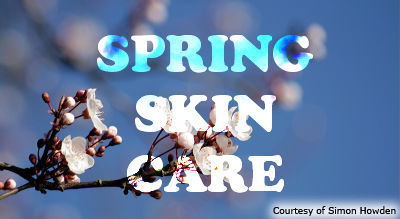Skin Needs Protection All Four Seasons

April 15, 2011
Warm weather is quickly approaching, meaning the sun’s harmful UVB rays are escaping through the darkness of winter. As more students become aware of the sun’s harmful ultraviolet rays and use sunscreen to protect skin during the summer, skin is left unprotected during the other three seasons.
When ultraviolet rays (UVR) shine down on one’s skin, a tan is the body’s natural defense against further damage caused by the sun’s UV radiation. UVB rays are the type of sunshine that everyone is afraid of; they shine down depending on the time, place and season. These rays most commonly shine down during the summer, which is why concealing oneself in sunscreen is highly advised and very important.
When UV radiation reaches one’s skin, a brown pigment, milanin, gets produced by cells called melanocytes, darkening the cells of the epidermis. The sun’s UV rays damage the DNA of the skin’s epidermal cells, triggering enzymes that race to repair the damage. “These enzymes do not always repair the DNA successfully, and all this unrepaired damage can lead to mutations that increase the risk of skin cancer,” according to the Skin Cancer Foundation.
The solar UV spectrum has been divided into three wavelengths by scientists – UVA, UVB and UVC. UVC and UVA rays were considered harmless, until a discovery in the 1990s.
UVC rays are still considered harmless as they get absorbed by the ozone layer, but now it has been discovered that 95 percent of UVR reaching earth are UVA rays. UVA rays are the sunbeams that shine all year round during daylight hours and although they don’t easily cause sunburn.
The problem is that UVA rays penetrate deeper into the skin than UVB rays. When this happens, the UVA rays can go all the way through the skin’s protective epidermis to where blood vessels and nerves are found. Because of this, UVA rays increase the chances of melanoma, the most deadly skin cancer, by damaging a person’s immune system and penetrating deeply to cause genetic damage of DNA in skin cells.
Many kids, teenagers and even adults are unaware of the extreme damage that can occur when the sun is not shining. “It is actually more important to wear sunscreen on cloudy days [opposed to sunny days] because… the rays are more magnified,” said school nurse Kim Donohue. If the UVR tries to bounce off the ground to escape back to the atmosphere, the clouds trap the rays so they bounce back to burn humans again.
Skin cancer patients were typically patients living in their 60s. Lately, however, patients in their 20s have been causing a skin cancer epidemic in the United States, annually diagnosing one million cases yearly. The increased use in tanning beds can be partly to blame.
Tanning beds use the same radiation that goes deep inside one’s body to harm one’s immusystem and is most likely to cause genetic mutations in your DNA. “The data’s been clear for years that what tanning beds emit, which is mostly UVA, is actually carcinogenic,” said dermatologist Dr. Eric Finzi. Tanning beds are so bad for the body, The World Health Organization’s International Agency for Research on Cancer announced that tanning beds have been placed in the highest risk catagory for cancer, along with cigarettes.
Sunless tanning lotion are still deemed harmless and safe for a nice summer tan, and recommended by dermatologists. On any day, be sure to apply sunscreen to protect skin from UVA rays. Some morning lotions have sunscreen built in, for unnoticeable protection during the winter. Donohue recommends a minimum SPF of 30. The Skin Cancer Foundation has its Seal of Recommendation labeled on sunscreens, so you can choose a brand of sun care products to best protect your skin.




John • May 3, 2011 at 9:25 am
I find this very educational. Thanks!
Kevin • May 3, 2011 at 9:22 am
These are some really helpful tips. Thanks a lot.